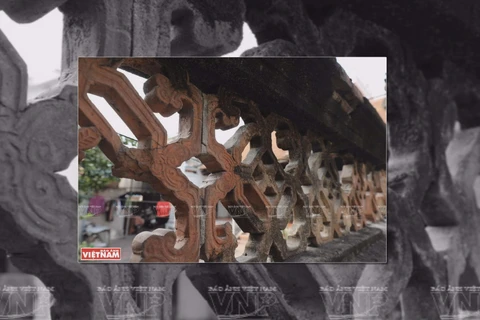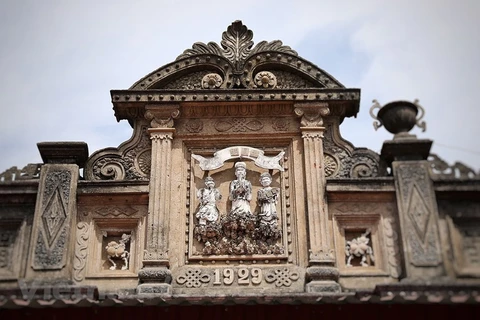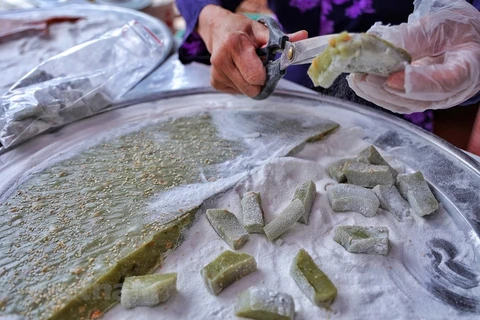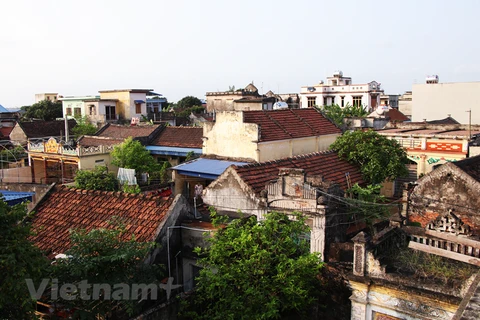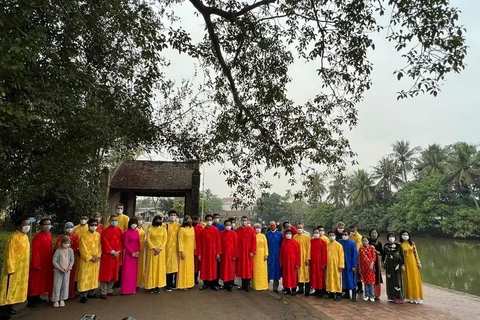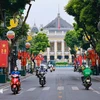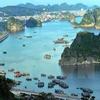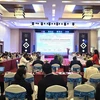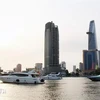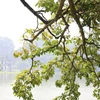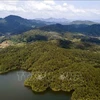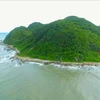Thanh Hoa (VNA) – Lying on the southern bank of Ma River in Ham Rong ward, Thanh Hoa city in the north central province of the same name, Dong Son village has been viewed as one of the ten most beautiful ancient villages in Vietnam.
Since the beginning of the 20th century, the name Dong Son has been well-known as an archaeological treasure. Due to its thousand years of history, the village has the structure of purely agricultural villages, featuring the most typical architecture of northern villages.
It is attractive to visitors for its peaceful beauty, historical architecture, and Dong Son archaeological relics.
With a total area of nearly 4sq.km, Dong Son ancient village is home to 330 households whose main earnings come from farming.
The history of the village is associated with the ups and downs of the history of Thanh Hoa. It reflects the development of the locality from the time of Hung Kings to the modern age.
Touring the thousand-year village, tourists will be firstly impressed by the archaeological vestiges of Dong Son Culture, which has been famous all around the world since the mid-1920s. They will be then impressed by characteristic elements of Vietnam’s traditional villages with small lanes, ancient pagodas, temples, communal houses, and wells. To reach small lanes, tourists can only enter the village through the main gateway.
Dong Son ancient village is considered as a typical Vietnamese village as it retains a system of tangible and intangible cultural values and villagers still observe a 100-article village convention on communal land management, funeral and wedding. In addition, the village is divided into hamlets which classify locals by their spiritual life. For example, Van (Literature) hamlet is home to Chinese script learners, while Vo (martial arts) hamlet gathers those who serve in the military, and Nhac (Music) hamlet is for those who are interested in music.
Together with keeping the values of religious relics, including temples, communal houses, and epitaph, the village preserves its annual festival on the third day of the third lunar month with a wide range of rituals in commemoration of the village founder.
The Thanh Hoa provincial People’s Committee has organised a tour of the village as an effort to preserve and promote cultural values and create an interesting tourism product of the province. Joining the tour, visitors have an opportunity to learn about and experience Dong Son Culture and visit interesting tourism destinations, including the national relic of the Le Uy - Tran Khat Chan temple, Dong Son archaeological relics, the provincial-level relic of Dong Son pagoda, and an over 200-year-old ancient house of Luong Trong Due's family. Tourists will ramble through the village’s four lanes: Nhan (Humanity), Nghia (Righteousness), Tri (Wisdom), and Dung (Bravery).
Vice Chairman of the provincial People’s Committee Nguyen Van Thi said to fulfill the twin goal of keeping the COVID-19 at bay and boosting socio-economic development, Thanh Hoa will step by step reopen to holidaymakers, keeping in mind that any location that is verified as safe from the virus will be reopened first.
Accordingly, Thanh Hoa will serve vacationers living in local “green areas” for a start and then “green areas” from outside the province. It will welcome all visitors, both at home and overseas, when the COVID-19 vaccine coverage is wide enough to achieve herd immunity nationally and globally, he said.
Plenty of challenges still lie ahead for Thanh Hoa’s tourism to adapt to the “new normal” and restart safely and sustainably.
Last year, Thanh Hoa welcomed 7.3 million tourists to earn close to 10.4 trillion VND (453.7 million USD) in revenue. Its tourist arrivals reached 3.1 million and revenue exceeded 4.61 trillion VND in the first nine months of this year due to impacts of the fourth COVID-19 wave./.
VNA


